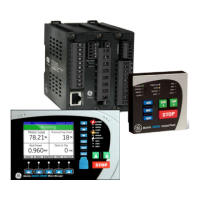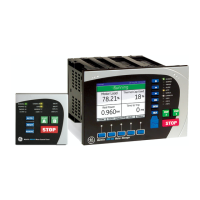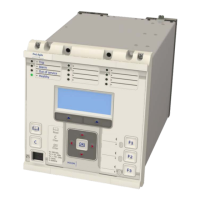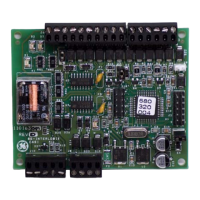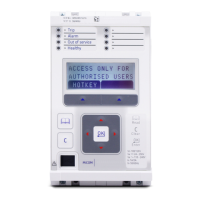2 PROTECTION SIGNALLING INTRODUCTION
Unit protection schemes can be formed by several IEDs located remotely from each other and some distance
protection schemes. Such unit protection schemes need communication between each location to achieve a unit
protection function. This communication is known as protection signalling or teleprotection. Communications
facilities are also needed when remote circuit breakers need to be operated due to a local event. This
communication is known as intertripping.
The communication messages involved may be quite simple, involving instructions for the receiving device to take
some defined action (trip, block, etc.), or it may be the passing of measured data in some form from one device to
another (as in a unit protection scheme).
Various types of communication links are available for protection signalling, for example:
● Private pilot wires installed by the utility
● Pilot wires or channels rented from a communications company
● Carrier channels at high frequencies over the power lines
● Radio channels at very high or ultra high frequencies
● Optical fibres
Whether or not a particular link is used depends on factors such as the availability of an appropriate
communication network, the distance between protection relaying points, the terrain over which the power
network is constructed, as well as cost.
Protection signalling is used to implement unit protection schemes, provide teleprotection commands, or
implement intertripping between circuit breakers.
2.1
UNIT PROTECTION SCHEMES
Phase comparison and current differential schemes use signalling to convey information concerning the relaying
quantity - phase angle of current and phase and magnitude of current respectively - between local and remote
relaying points. Comparison of local and remote signals provides the basis for both fault detection and
discrimination of the schemes.
2.2
TELEPROTECTION COMMANDS
Some Protection schemes use signalling to convey commands between local and remote relaying points. Receipt
of the information is used to aid or speed up clearance of faults within a protected zone or to prevent tripping from
faults outside a protected zone.
Teleprotection systems are often referred to by their mode of operation, or the role of the teleprotection command
in the system.
Three types of teleprotection command are commonly encountered, direct tripping, permissive tripping and
blocking schemes.
Direct Tripping
In direct tripping applications (also known as intertripping), signals are sent directly to the master trip relay. Receipt
of the command causes circuit breaker operation. The method of communication must be reliable and secure
because any signal detected at the receiving end causes a trip of the circuit at that end. The communications
system must be designed so that interference on the communication circuit does not cause spurious trips. If a
spurious trip occurs, the primary system might be unnecessarily isolated.
Permissive Tripping
Permissive trip commands are always monitored by a protection relay. The circuit breaker is tripped when receipt
of the command coincides with a ‘start’ condition being detected by the protection relay at the receiving end
responding to a system fault. Requirements for the communications channel are less onerous than for direct
Chapter 20 - Fibre Teleprotection P543i/P545i
500 P54x1i-TM-EN-1
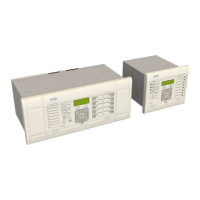
